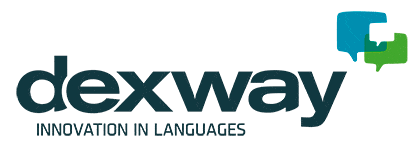Language labs have long played a key role in the language learning process. Since their introduction more than a century ago, generations of students have learned within a language lab of some kind.
The digital tools language schools and training academies have at their disposal have changed hugely since the beginning of the twentieth century. The earliest language labs would now be close to unrecognisable for modern students. A great deal of these changes are due to advancements in audio and visual technology. Nevertheless, by far the biggest change has been due to the growth of the digital world, including online language courses.
Online language courses have had a big impact on language labs. They are a big part of the reason why labs now look, feel and sound very different from their pre-digital counterparts.
Here are four of the ways online courses have made an impact on the language lab.

#1. Language labs no longer need to be physical places
Up until relatively recently, if a language student wanted to practice their listening and speaking skills at a language lab, they would’ve had go to the room at their training facility where the lab was.
This often made individual study outside of school hours difficult for language students. It also meant their revision often had to work around school timetables, other students and potential room clashes.
The growth of the digital language lab has changed all of this. The lab is no longer in a physical classroom on a certain number of specially formatted computers. Instead, language students can access language labs from anywhere, on their own computer, or even via their tablet or smartphone.
#2. Speaking and listening practice is no longer restricted to certain times
Traditionally, most language labs were only open for student use during scheduled times. This tended to be during school hours and when there were no classes reserved for using the room. Students also had to be mindful about any other people who may have wanted to use the language lab facilities and would often have their revision time cut short in order to let other students take a turn.
Putting limitations on this kind of speaking and listening practice often meant that language students weren’t able to practice as much as they would’ve liked, and that their progress was therefore slower than it needed to be.
Online language courses with integral digital language labs have changed this. There are no longer any time restrictions on when and how long students can engage with the language lab. Students can spend as much time using these tools as they want to, as there is no limit on how many students can access the facilities at any one time. Students can also choose to do their speaking and listening practice at whatever time works best for them, whether it’s during school hours, during the evening, or even in the middle of the night.
#3. The presence of a tutor or language technician is no longer required
The earliest language labs required a tutor or language technician to sit at a master station and listen in on the practice their students were doing. Though this helped to provide valuable feedback opportunities for students, it wasn’t always the most efficient use of staff time.
Even more modern computer-based language labs still needed a real-life teacher to monitor and correct pronunciation. Advances in speech recognition technology now allow students to interact with language lab software completely independently. Language laboratory speech recognition technology can swiftly feedback to students on their pronunciation and clearly highlight areas for improvement.
#4. There is minimal investment required to set up a language lab
Physical language labs were very expensive to set up. They required a whole bank of computers and generally each one would have to have a revision exercise software installed.
This process has become far easier and more inexpensive thanks to the rise of online language courses. Training schools and academies no longer need to invest in class sets of technology. Students can use their own laptops or devices to access learning materials. Cloud based software means that online language courses and associated language labs can be accessed from any computer or device without the need for software to be physically installed.
Despite the many changes language labs have undergone, it’s still widely accepted that their method is extremely effective.
With this in mind, we have taken care to add extremely effective language lab software to all our learning solutions. Why not explore the role language labs play in the delivery of Dexway courses?
You may also find interesting:
- 5 Features of Language Labs with Dexway Methodology
- 4 Benefits of Combining EdTech and Traditional Teaching for Language Learning
- Is Flipped Classroom the Most Effective Method for Learning Languages?




